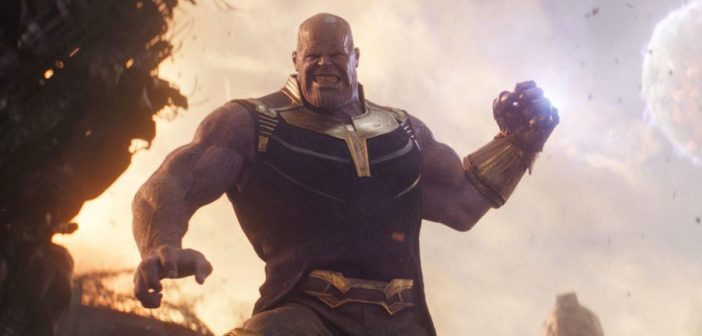WARS START IN all kinds of ways. Pre-dawn raids, assassinations, missile launches, coups. Generally speaking, you’re looking at stealthy preparation and a sudden blow. This isn’t Westeros; no one’s out here massing troops on opposite sides of a meadow, while the fat cats in the biggest tent play an oversized game of Risk and tend to their carbuncles.
Just because such pageantry is no longer en vogue, however, doesn’t mean there’s not something absolutely terrifying about a casual display of potential force. To wit: the maneuver that played out yesterday on Brand Twitter, that land of performative pettiness and intractable hey-fellow-kidsism. While a depressing portion of the Discourse that day was devoted to fire memes about fried chicken sandwiches, Disney’s account rose with the sun to post a seemingly innocuous message. “It’s moving day!” the tweet read, alongside a GIF of the Genie from Aladdin. “Is everyone packed and ready to go to @DisneyPlus?”
Disney+, as it’s known everywhere that can show a plus sign without borking an entire platform, is the company’s forthcoming streaming service, which had just announced some new details regarding its November launch. But this tweet didn’t mention of any of that information. Why should it? That’s not how rallying cries work. One by one, Disney’s various billion-dollar subsidiary brands checked in.
“Almost!” responded Pixar’s account (11.5 million followers). “But … we can’t find Dory.”
“Maybe we can help!” chimed National Geographic (23.2 million followers).
“Hang tight,” said Marvel (8.7 million), throwing in an image from Iron Man 3. “We have quite a few suits here.”
Others joined the thread. The Avengers. Star Wars. Yet another Marvel mini-franchise, Guardians of the Galaxy. Even The Simpsons—Disney’s newest IP empire, nabbed courtesy of 21st Century Fox earlier this year—checked in, albeit to sneer. Each with a massive following, each with a voice consistent with the IP it represents.
It’s moving day! Is everyone packed and ready to go to @DisneyPlus? pic.twitter.com/bAFxRjT5aY
— Disney (@Disney) August 19, 2019
Twitter pundits imagined a conference room full of giddy 26-year-old social media managers pressing Tweet in sequence (“OK, you go!”). A decade ago, maybe. But now, on the cusp of a battle royale among streaming services? You’d better believe this had been pored over by marketing executives, story departments, and the Mouse House’s shiniest nameplates. Because as much as the tweet-parade served to remind various fandoms how much Disney+ had to offer, it was also meant to scare the absolute bejeezus out of Netflix—and Amazon, and HBO Max, NBC Universal, CBS-Viacom, and anyone else who would be lining up across from Disney. Now, they could all witness the firepower of this fully armed and operational battle station.
An even apter comparison might be the Infinity Gauntlet, the jeweled glove that propelled the first three phases of the Marvel Cinematic Universe. Where the Death Star is a monolith, the Gauntlet works by harnessing the power of multiple stones, each powerful in its own right. Like Star Wars. Or Pixar. Or Nat Geo. Or … you get the idea. Taken individually, any one of them—its massive catalog of content, as well as whatever’s yet to come—could entice someone into spending $6.99 a month to feed at the trough. Taken together? They’re not just compelling, they’re inevitable.
The first era of the Streaming Wars was about first movers like Netflix and Hulu licensing a big enough library to attract subscribers; the second, developing original series and movies in anticipation of those licenses’ owners pulling them back. The age of verticality that we’re entering into now depends wholly on the brands you boast, and what matters to people. CBS-Viacom is banking that Mission Impossible and Star Trek are strong enough to pull people in; ditto for NBCUniversal and The Office. HBO Max is doing the same with Friends and, well, with HBO, one of the few networks to have established a brand identity through sheer quality.
If you haven’t noticed yet, all of this leaves Netflix in a vulnerable position. The streaming service recently announced that it had lost subscribers for the first time in eight years; when the brand of pipe matters as much as what’s coming out of it, what does Netflix’s pipe mean? It has global reach. It has Twitter accounts for discovery and genre fans; its popular shows have their own. Would fans melt down, though, if Stranger Things and 13 Reasons Whyand On My Block started talking to each other on social media?
Possible, sure, but not likely. Disruption means a lot less when the disruptor loses its shiniest jewels—and especially when those jewels wind up in a competitor’s glove.
–
This article first appeared in www.wired.com
Seeking to build and grow your brand using the force of consumer insight, strategic foresight, creative disruption and technology prowess? Talk to us at +9714 3867728 or mail: info@groupisd.com or visit www.groupisd.com


